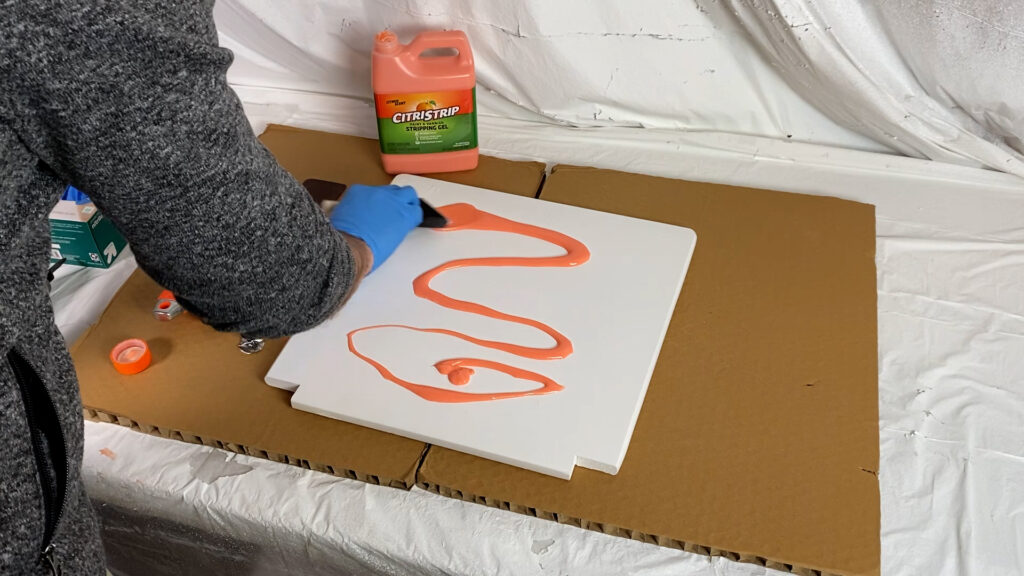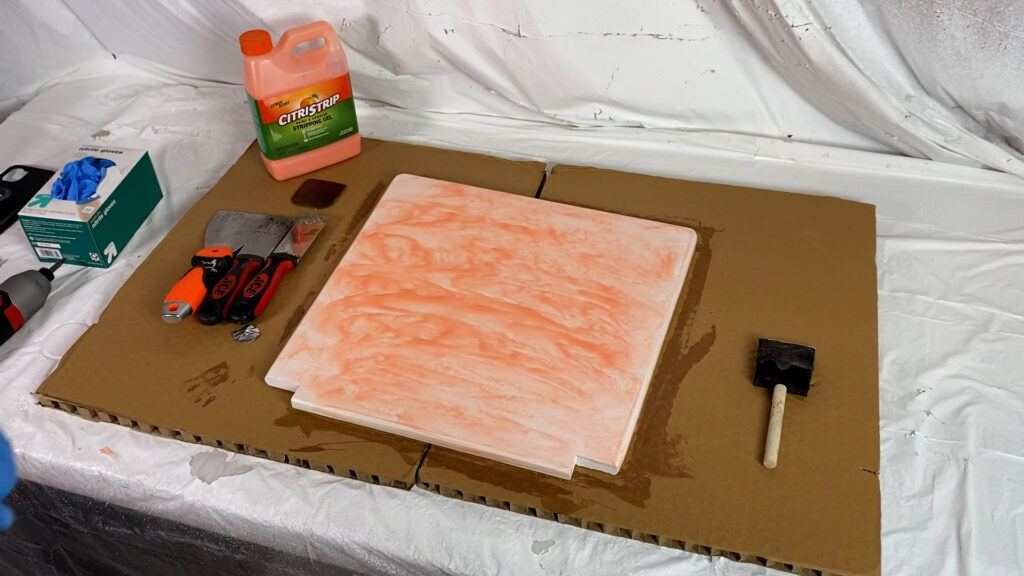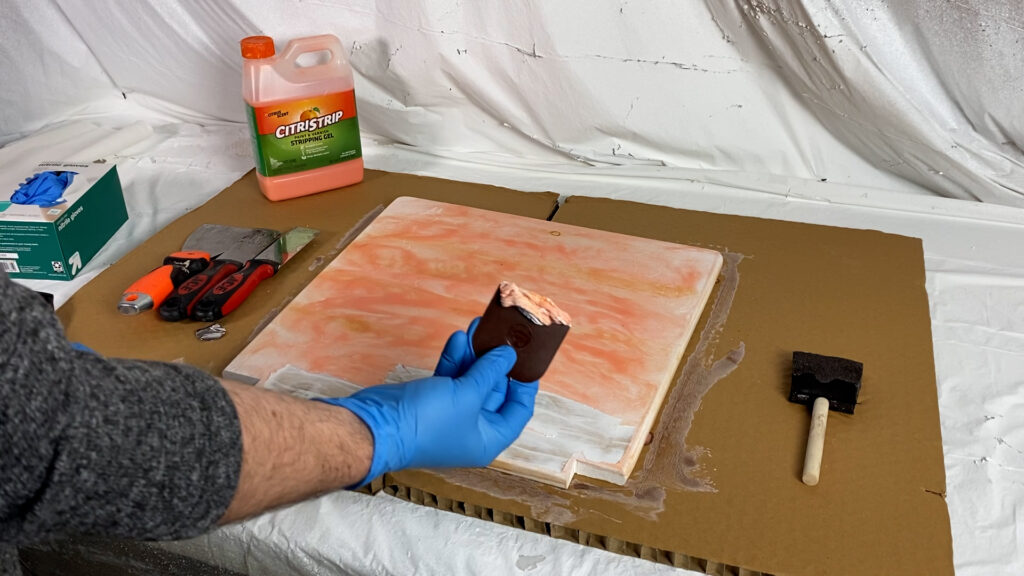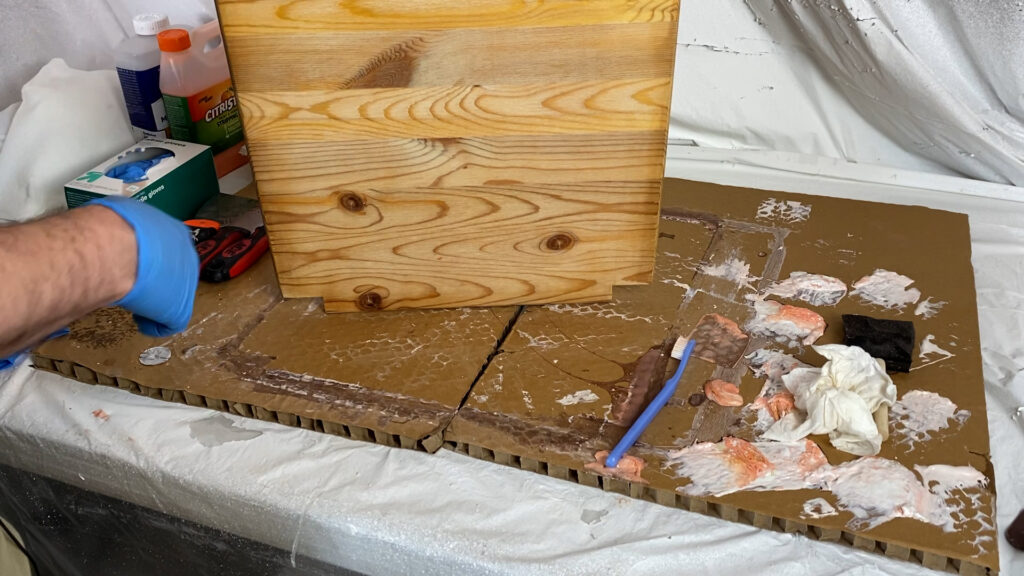Hey there, DIY enthusiasts! I’m Drew, and today I’m excited to show you my go-to method for reviving old wooden pieces. If you’ve got a wooden project that needs some TLC, you’re in the right place. I’ll walk you through how to strip wood using Citristrip gel. Whether you’re refinishing furniture or tackling a home improvement project, this low-odor stripping gel is a game-changer.
Find the Gel Online – As an Amazon Associate I may earn from qualified purchases.

Check out the video here as well:
Getting Started: Applying the Stripping Gel
First things first, safety gear on! Goggles and gloves are a must to protect yourself. Then, it’s time to apply the stripping gel to the wood. Remember, this gel works wonders on both paint and varnish, making it perfect for all your wood restoration needs. What I love most is that it’s eco-friendly and contains fewer harsh chemicals than other strippers.
Shake the container well before use, and then generously apply the stripping gel to your wooden project. I like to create an ‘S’ pattern with it to ensure even coverage. The key here is not to skimp – the thicker, the better. A thick layer ensures the gel remains effective.

After you apply the gel paint it over the entire area you are stripping. Be sure there is a nice thick layer.

Letting the Citristrip Gel Work Its Magic
Now, the waiting game begins. Leave the gel to sit and do its thing for about 30 minutes. This gives it ample time to penetrate and loosen the paint or varnish. Remember, the thicker the layer, the better it works. So don’t rush this step.
Scraping Off the Old Finish
After the wait, it’s time to remove the old paint or varnish. I start by using a plastic scraper. As you can see, the gel has done its job, and the paint is coming off quite easily. It might take a little elbow grease, but the results are worth it.


Cleaning Up
To clean up the residue, I use an old wet rag. This helps wipe away any leftover gel and paint. Keep working at it until you’re satisfied with the results. If necessary, repeat the process or use additional towels to ensure a thorough cleanup.



Conclusion:
And there you have it! That’s how to strip wood using citristrip gel. I think this is a fantastic way to breathe new life into wood surfaces. It’s a low-odor option that’s not only effective but also safer for the environment. I’ve been using it on an ongoing project, these chairs you see here, and it’s been a breeze. After stripping, I’ll be staining and sealing them to complete the set.
If you’re a fan of DIY projects around the house, like and subscribe to my channel for more tips and tricks. I hope this guide has been helpful for your wood restoration journey. Stay tuned for my next project, and until then, happy DIY-ing! Feel free to check out how to stain wood next.
